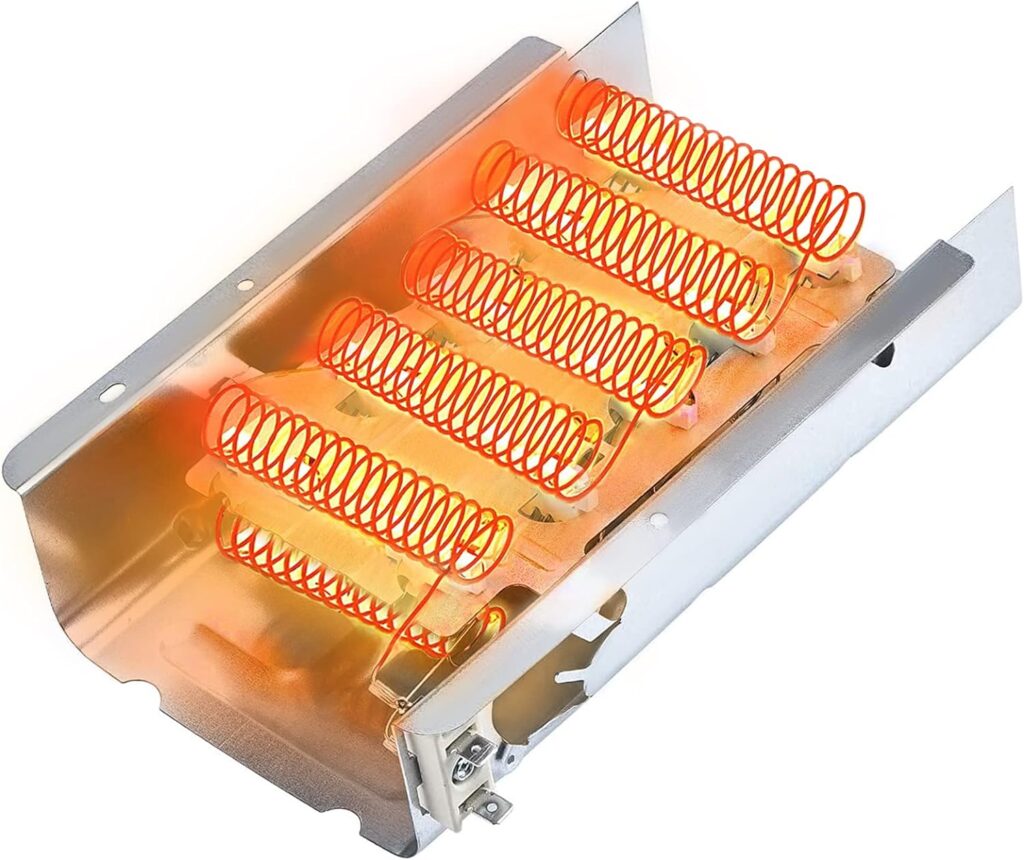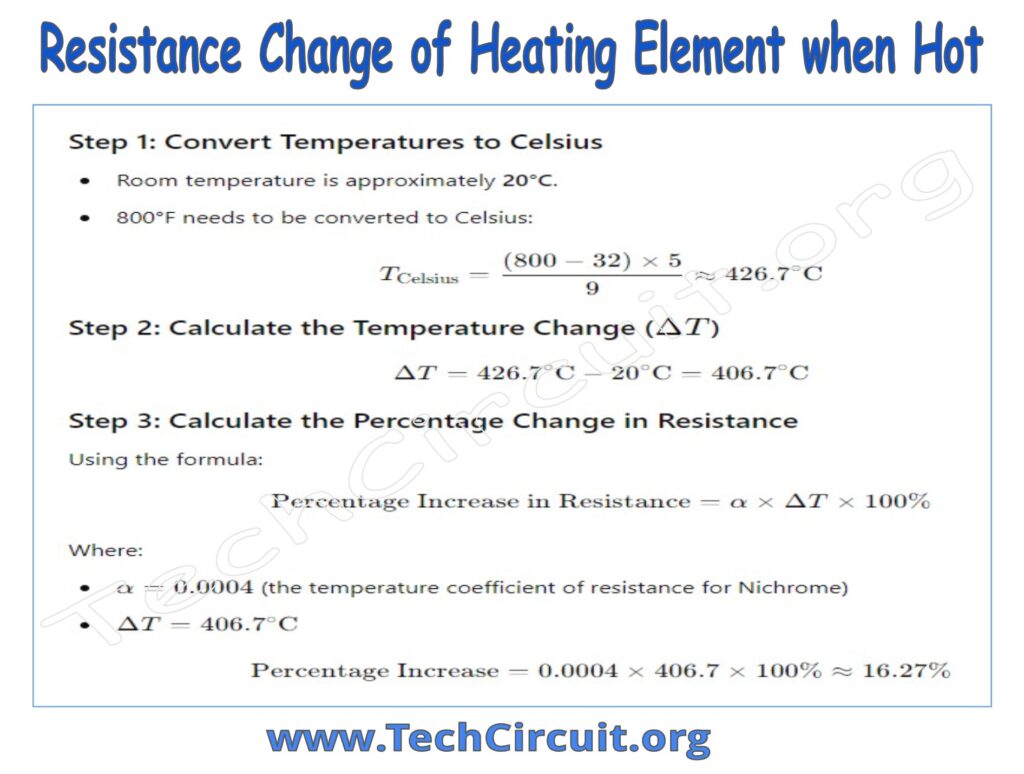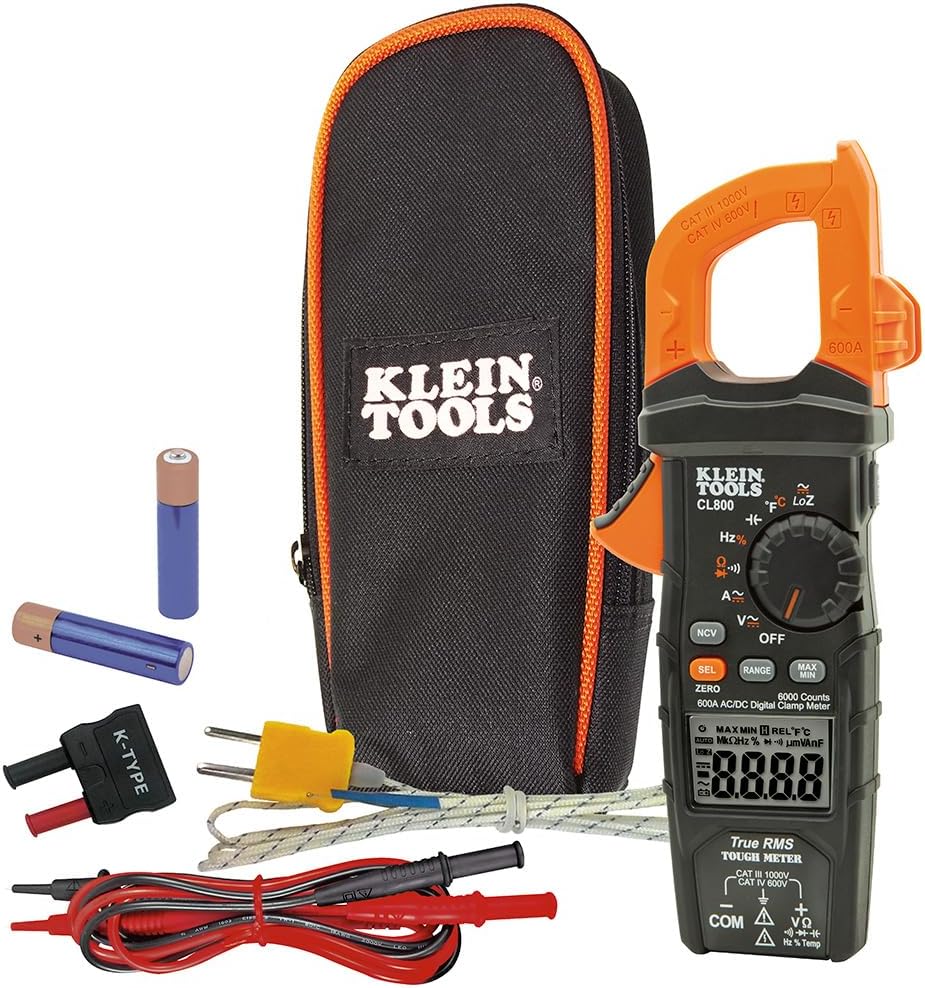
Most heating elements like those in dryers and ovens utilize a wire made of nichrome, which is an alloy composed of nickel and chromium. It has a very high resistance per foot, a high mechanical strength when hot, and a very high melting point. It also has an extremely low temperature coefficient of resistance (TCR). This means that its resistance changes very little as it gets hot.
In typical applications like heating elements, Nichrome can reach temperatures between 450°F and 1200°F. If on average, the element reaches 800°F, we can determine how much its resistance changes from room temperature. Although it doesn’t change much, the extreme temperatures at which it is used will make a notable difference in its resistance, and expected wattage (heat output).
Disclaimer:
THIS BLOG IS INTENDED FOR APPLIANCE TECHNICIANS ONLY. ALWAYS USE APPROPRIATE SAFETY PRECAUTIONS WHEN WORKING WITH ELECTRICITY. THIS BLOG IS FOR INFORMATIONAL PURPOSES ONLY. IF YOU CHOOSE TO UTILIZE THE CONCEPTS IN THIS BLOG, YOU DO SO AT YOUR OWN RISK. THE AUTHER ASSUMES NO RESPONSIBILITY OR LIABLIITY FOR ANY ERRORS OR OMISSIONS IN THE CONTENT OF THE BLOG.
The Resistance of Nichrome at 800°F vs. Room Temperature
Again, Nichrome has an extremely low TCR – about .0004 ohms per degree Celsius. We can calculate how much its resistance increases at 800°F vs. room temperature as follows:

Thus, the effective resistance of a 10 ohm heating element like for a dryer will increase to 10 x 1.1627 = 11.63 ohms at 800°F. We can go a step further and determine the wattage (or heat output) of the element by using the Watt’s Law formula of V²/R = (240Vx240V) / 11.163 = 4953 Watts. This is opposed to the 5760 Watts of heat output that would be expected of an element that maintained its 10 ohms of measured resistance at operating temperature.
Recommended Multimeter for Field Service
Below is the multimeter I recommend for field service as it encompasses all features imaginable for appliance and HVAC repair. Please note that these articles take time and effort to write, and I do receive commissions from every sale. You can help us offset our time by clicking the link or picture below to purchase this meter or any other test equipment. CLICK HERE TO PURCHASE

Conclusion
Nichrome is an alloy that is commonly used in heating elements, and is ideally suited for its purpose. It maintains its mechanical strength at operating temperature, has a very high resistivity, and has a very low temperature coefficient of resistance (TCR). Because of its high operating temperature, however, its resistance change can be significant enough to effect its operating wattage as opposed to its calculated wattage based on it’s room temperature resistance.
For example, a 10 ohm heating element if maintained at 10 ohms, would produce V²/R = (240V x 240V)/10 = 5760 watts, it would really only produce (240V x 240V)/11.163 = 4953 watts. This is a 14% decrease in wattage as compared to if its resistance did not decrease at operating temperature.
Don’t forget:
“Diverting 10 min/day of social media time towards learning something new, is 5 hours of newfound monthly knowledge.” – SM
To DONATE to the Tech Circuit – CLICK HERE
Alphabetical Links to all Tech Circuit Articles and Blogs – CLICK HERE
Links to all Tech Circuit Cheat Sheets/Field References for Appliance/HVAC Techs – CLICK HERE
For additional electrical and electronics learning material for field techs, visit the following links:
Homepage at http://www.TechCircuit.org
Facebook group at: https://www.facebook.com/groups/746823709133603
Youtube Channel: https://www.youtube.com/@TheTechCircuit
We are a participant in the Amazon Services LLC Associates Program, an affiliate advertising program designed to provide a means for us to earn fees by linking to Amazon.com and affiliated sites.
